

Why is the world's biggest landfill in the Pacific Ocean? In the broad expanse of the northern Pacific Ocean, there exists the North Pacific Subtropical Gyre, a slowly moving, clockwise spiral of currents created by a high-pressure system of air currents.
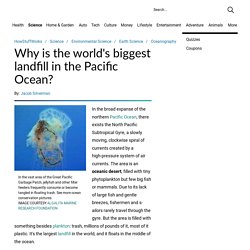
The area is an oceanic desert, filled with tiny phytoplankton but few big fish or mammals. OR&R's Marine Debris Program. What and Where Are Garbage Patches?
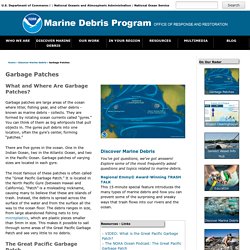
Garbage patches are large areas of the ocean where litter, fishing gear, and other debris - known as marine debris - collects. They are formed by rotating ocean currents called “gyres.” You can think of them as big whirlpools that pull objects in. Great Pacific garbage patch. Great Pacific Garbage Patch now three times the size of France. According to a three-year study published in Scientific Reports Friday, the mass known as the Great Pacific Garbage Patch is about 1.6 million square kilometers in size -- up to 16 times bigger than previous estimates.

That makes it more than double the size of Texas. Ghost nets, or discarded fishing nets, make up almost half the 80,000 metric tons of garbage floating at sea, and researchers believe that around 20% of the total volume of trash is debris from the 2011 Japanese tsunami. The study -- conducted by an international team of scientists with The Ocean Cleanup Foundation, six universities and an aerial sensor company -- utilized two aircraft surveys and 30 vessels to cross the debris field. Along with nets to survey and collect trash, researchers used two six-meter-wide devices to measure medium to large-sized objects.
Massive South Pacific Ocean garbage patch ‘a dead place’ A marine conservationist who has just returned from an expedition to survey a massive 'garbage patch' in the South Pacific ocean says it's completely devoid of marine life.
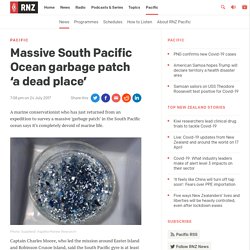
Photo: Supplied/ Algalita Marine Research Captain Charles Moore, who led the mission around Easter Island and Robinson Crusoe Island, said the South Pacific gyre is at least one million square kilometres in size. Plastics in the Environment: Te Ao Hurihuri – The Changing World. 2019: Evidence summary on plastics in the environment.
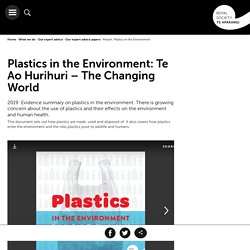
There is growing concern about the use of plastics and their effects on the environment and human health. This document sets out how plastics are made, used and disposed of. It also covers how plastics enter the environment and the risks plastics pose to wildlife and humans. Download Plastics in the Environment [PDF 7.82 MB] He mihi | Acknowledgement This work on plastics was made possible by a bequest from the Baumgart estate. Plastic trash rides ocean currents to the Arctic. View the video.

Remember the last plastic straw you used? It may have simply ended up in a landfill. But there’s also a good chance that straw just began a very long journey. Ocean Trash Plaguing Our Sea. White heron left with 'choking collar' of plastic. 'The most disgusting thing I’ve seen in the water' Ocean Motion : Impact : Warmer Oceans and Marine Life. SEAPLEX researchers encountered a large ghost net with tangled rope, net, plastic, and various biological organisms.
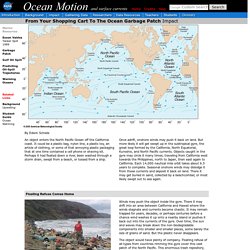
Matt Durham (right) is pictured with Miriam Goldstein. North Pacific Gyre Junk from 5 Gyres on Vimeo. Around the world, plastic pollution has become a growing plague. In this video Dr. Marcus Eriksen sailed a vessel named "Junk" made out of plastic bottles from LA to Hawaii to research the problem and raise awareness. Learn more at 5gyres.org. Great Pacific Garbage Patch Is Bigger and Mostly Made of Fishing Gear. The Great Pacific Garbage Patch is the world’s largest collection of floating trash—and the most famous.
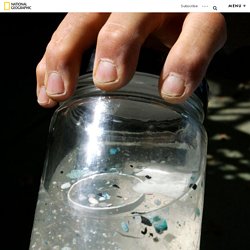
It lies between Hawaii and California and is often described as “larger than Texas,” even though it contains not a square foot of surface on which to stand. It cannot be seen from space, as is often claimed. National Geographic Society. Plastic Pollution Guide - Ocean Pollution Facts & Figures. WWF sounds alarm after 22kgs of plastic found in dead whale. Bigger waves needed to turn the tide on plastics. Emily Joy Frost Emily Joy Frost is a doctoral candidate in the University of Auckland’s School of Biological Sciences.

Show more Futurelearning. 20 Facts About Ocean Pollution. The ocean remains one of the most expansive, mysterious and diverse places on Earth.
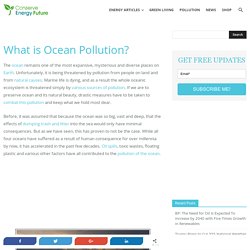
Unfortunately, it is being threatened by pollution from people on land and from natural causes. Marine life is dying, and as a result the whole oceanic ecosystem is threatened simply by various sources of pollution. If we are to preserve ocean and its natural beauty, drastic measures have to be taken to combat this pollution and keep what we hold most dear. Before, it was assumed that because the ocean was so big, vast and deep, that the effects of dumping trash and litter into the sea would only have minimal consequences. But as we have seen, this has proven to not be the case. 22 Facts About Plastic Pollution (And 10 Things We Can Do About It) - EcoWatch. By Nicole D'Alessandro It seems nearly impossible to escape plastic in our every day lives, doesn't it?
And we can't escape plastic pollution, either. Plastic is literally at my fingertips all day long. Plastic keyboard. Plastic framed computer monitor. Most Ocean Plastic Pollution Carried by 10 Rivers. The equivalent of one garbage truck full of plastic waste is dumped into the world’s oceans every minute, equal to 8 million tons a year. New research suggests that 90 percent of that waste gets into the oceans through 10 major river systems. “It seems that larger rivers preferentially transport plastic and these are rivers with a large population. You could reduce river plastic loads tremendously by focusing on these 10 rivers,” lead researcher Christian Schmidt of Germany’s Helmholtz Center for Environmental Research, told VOA.
Plastic Pollution.